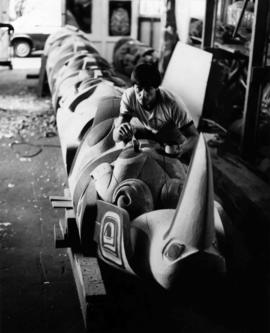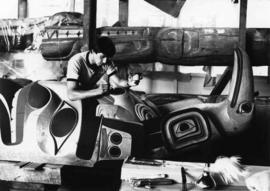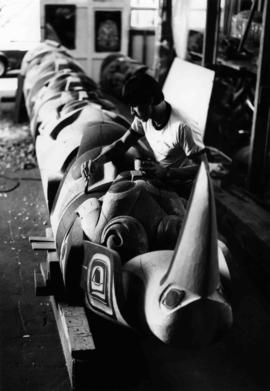The majority of the file contains historical images of the Tsilhqot'in, Secwepemc, Stl'al'lmx, and the Nlaka'pamux peoples. The photographs depict village life, including images of building structures in the BC interior, fish processing techniques such as fish drying, and carvings such as mortuary poles. Some of the images also depict First Nations people, some in regalia. The other images are official photographs taken by various museums in Canadian and American museums of Tsilhqot'in, Secwepemc, Stl'al'lmx, or Nlaka'pamux artifacts. The textual records contained in this file consist of a photocopy of a magazine article titled "Upstairs, downstairs: the early years," written by Heather Pringle, and published in the June 1996 (Volume 111, number 5) edition of the magazine Saturday Night.




